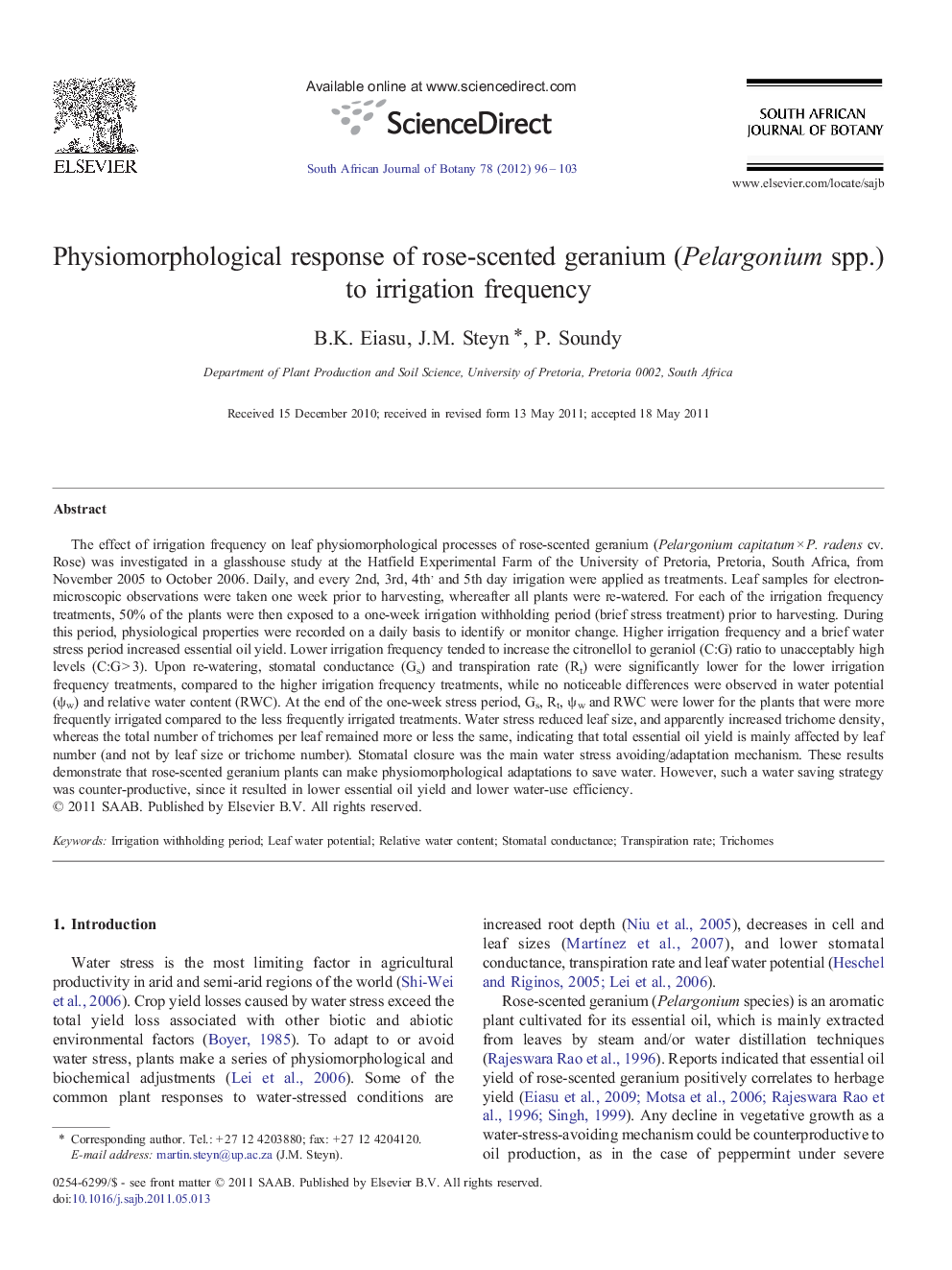| کد مقاله | کد نشریه | سال انتشار | مقاله انگلیسی | نسخه تمام متن |
|---|---|---|---|---|
| 4521048 | 1625180 | 2012 | 8 صفحه PDF | دانلود رایگان |

The effect of irrigation frequency on leaf physiomorphological processes of rose-scented geranium (Pelargonium capitatum × P. radens cv. Rose) was investigated in a glasshouse study at the Hatfield Experimental Farm of the University of Pretoria, Pretoria, South Africa, from November 2005 to October 2006. Daily, and every 2nd, 3rd, 4th, and 5th day irrigation were applied as treatments. Leaf samples for electron-microscopic observations were taken one week prior to harvesting, whereafter all plants were re-watered. For each of the irrigation frequency treatments, 50% of the plants were then exposed to a one-week irrigation withholding period (brief stress treatment) prior to harvesting. During this period, physiological properties were recorded on a daily basis to identify or monitor change. Higher irrigation frequency and a brief water stress period increased essential oil yield. Lower irrigation frequency tended to increase the citronellol to geraniol (C:G) ratio to unacceptably high levels (C:G > 3). Upon re-watering, stomatal conductance (Gs) and transpiration rate (Rt) were significantly lower for the lower irrigation frequency treatments, compared to the higher irrigation frequency treatments, while no noticeable differences were observed in water potential (ψw) and relative water content (RWC). At the end of the one-week stress period, Gs, Rt, ψw and RWC were lower for the plants that were more frequently irrigated compared to the less frequently irrigated treatments. Water stress reduced leaf size, and apparently increased trichome density, whereas the total number of trichomes per leaf remained more or less the same, indicating that total essential oil yield is mainly affected by leaf number (and not by leaf size or trichome number). Stomatal closure was the main water stress avoiding/adaptation mechanism. These results demonstrate that rose-scented geranium plants can make physiomorphological adaptations to save water. However, such a water saving strategy was counter-productive, since it resulted in lower essential oil yield and lower water-use efficiency.
► Higher irrigation frequency and a brief water stress period just before harvest increased essential oil yield.
► Lower irrigation frequency tended to increase the citronellol to geraniol (C:G) ratio to unacceptably high levels.
► Less often irrigation induced a long-term decline in stomatal conductance and transpiration rate, which enabled plants to maintain higher relative water content and leaf water potential under prolonged water stress.
► Trade-offs between leaf size and glandular trichome density implies that leaf number contributes more than leaf size to total essential oil yield.
► The results demonstrate that rose-scented geranium plants can make physiomorphological adaptations to save water but such a water saving strategy was counter-productive, since it resulted in lower essential oil yield and lower water-use efficiency.
Journal: South African Journal of Botany - Volume 78, January 2012, Pages 96–103